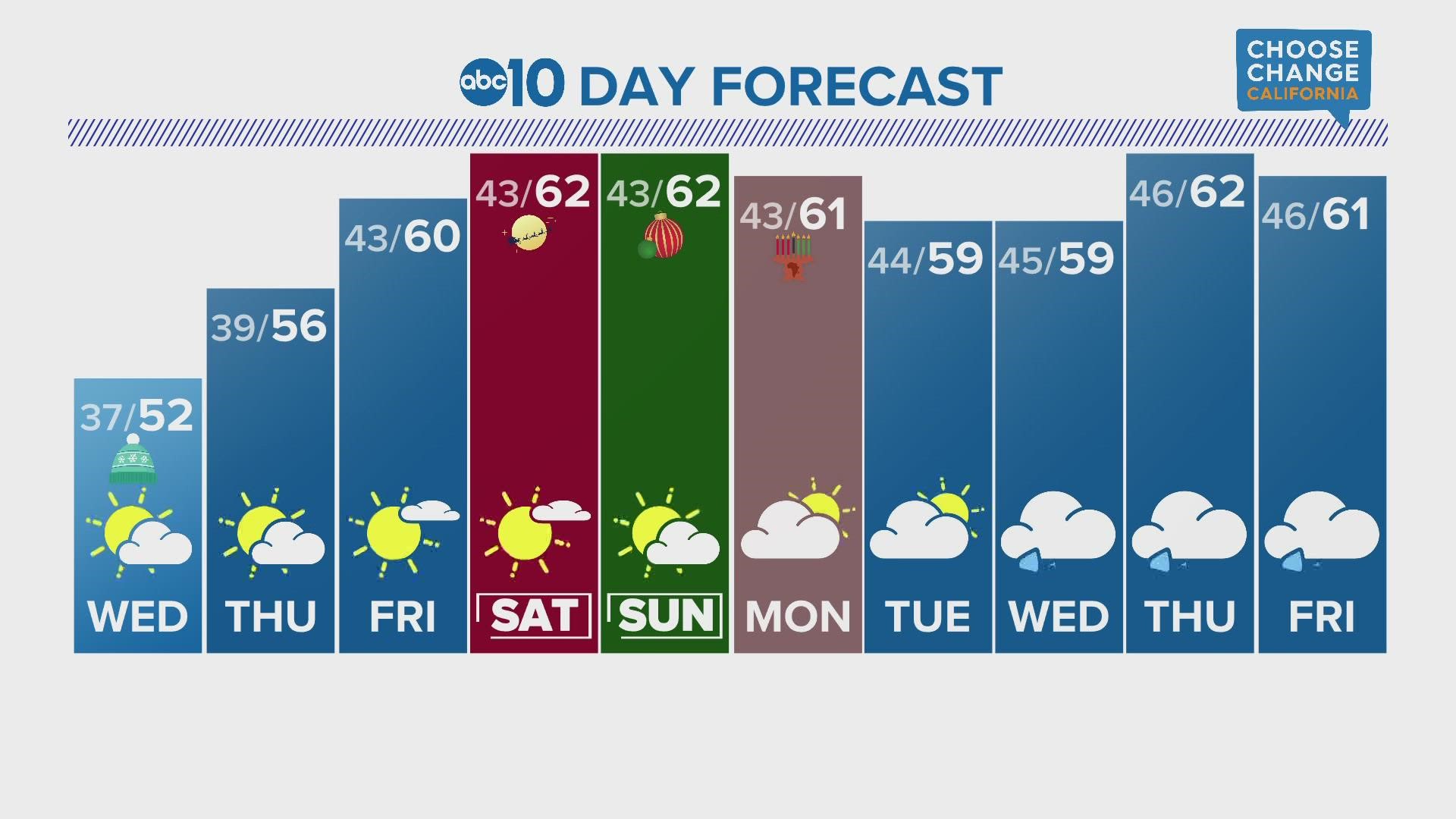CALIFORNIA, USA — The first official day of winter is Wednesday starting at 1:48 p.m. Pacific Time, but winter weather has already descended on Northern California.
As the Earth rotates around the Sun, different portions of the planet receive more or less sunlight depending on the tilt.
For the Northern Hemisphere, the winter solstice is when the Earth's axis is tilted away from the sun and we have the shortest days of the year around the third week of December. In most years, it falls between Dec. 20-22.
When the axis is tilted toward the sun, it's called summer and the peak is the summer solstice in the third week of June. It's also the longest day of the year.
Starting on Dec. 22, we will start to see a bit more daylight in the morning and evening.
It's worth mentioning it's understood that each day is 24 hours, and winter and summer solstices are just referring to daylight hours.
Sacramento will only see 9 hours and 28 minutes of daylight Wednesday. For the longest day of the year in June, Sacramento will see 14 hours and 51 minutes of daylight.
One other point worth discussing is the term winter. You might see a reference to "Meteorological Winter" as Dec. 1. This distinction is helpful for record-keeping so you can compare Dec-Feb time as winter vs. alternating start and stop dates with the winter solstice and spring equinox.
Watch more on ABC10 | Humboldt Earthquake: Thousands still without power in Northern California, more aftershocks expected



















